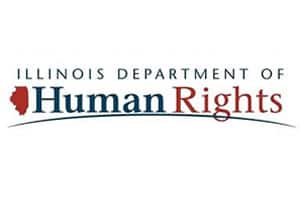
With so much attention on COVID-19 and its impact on workplace issues, employers may have lost track of some important changes affecting Illinois employers in 2020. Some of these changes took effect on July 1. Let’s take a look.
Full Speed Ahead for Mandatory Harassment Training
The Illinois Workplace Transparency Act (WTA) grabbed headlines last year because it ushered in significant new requirements on employers, inspired in part by the #MeToo movement. As we wrote about then, the WTA imposed new restrictions on confidentiality and arbitration agreements, which took effect January 1, 2020.
The WTA also requires Illinois employers to conduct annual sexual harassment training of all employees working in Illinois, starting in 2020. The required training must include the following minimum components:
- An explanation of sexual harassment consistent with the Illinois Human Rights Act (IHRA);
- Examples of conduct that constitutes unlawful sexual harassment;
- A summary of relevant federal and state statutory provisions concerning sexual harassment, including remedies available to victims of sexual harassment; and
- A summary of employers’ responsibilities in the prevention, investigation, and corrective measures of sexual harassment.
In April 2020, in the midst of the pandemic, the Illinois Department of Human Rights (IDHR) issued its long-awaited model harassment training program. The model program includes the required components for harassment training that will satisfy the WTA annual training obligations. Employers may craft their own harassment training programs, use the IDHR’s model training program, or use a combination of both, as long as the training provided to employees meets or exceeds the required minimum standards. Employers must maintain records of all training provided including the materials covered and the names of all employees who participated, such as attendance and sign in logs.
Reporting
In addition, starting in 2020, the WTA requires each Illinois employer that had an adverse judgment or administrative ruling against it in the preceding calendar year to submit annual reports to the IDHR that list and categorize the following information: the total number of adverse judgments or administrative rulings during the preceding year; whether any equitable relief was ordered; and the number of adverse judgements or administrative rulings entered against the employer within specific categories. The reporting period for 2019 begins on July 1, 2020, and the reports will be due by October 31, 2020. For subsequent calendar years, the deadline is July 1. The IDHR has announced that it will publish a form (Form IDHR 2-108) that employers may use to submit these reports; the IDHR says it will make that form available on its website in late July 2020.
With all of these monumental changes to digest, Illinois employers understandably may have not noticed a number of other less dramatic—but perhaps equally impactful—changes to the IHRA. Some of changes were included in the WTA itself, and others in a lesser-noticed companion bill that was signed into law around the same time as the WTA. Here is a rundown of the amendments.
IHRA Expands to Small Employers, Contractors
Effective July 1, 2020, the IHRA applies to employers with one or more employees within Illinois during 20 or more calendar weeks within the preceding calendar year. Prior to this change, the threshold for IDHR coverage for the bulk of the Act was 15 employees (sexual harassment, pregnancy, and disability discrimination provisions had already applied to employers with one or more workers even before this change).
In addition, also effective July 1, the IHRA’s definition of “employee” was expanded to include “any individual performing services for remuneration within” Illinois for an employer (as defined). Importantly, this seems to expand the IHRA to reach independent contractors and consultants. Another such change expands the definition of employee to include unpaid interns and apprentices.
Harassment Provisions Broadened
Still other changes (imposed by the WTA) expanded the scope of the IHRA in other ways. The law now explicitly provides that harassment based on any category protected by the IHRA is prohibited, and also that harassment of nonemployees (e.g., vendors or contractors in the workplace) is prohibited. Thus, harassment based on age, disability, marital status, and other IHRA protected categories is now explicitly a violation. (This codifies what many observers had already understood.)
Further, the amendment used much the same language that previously was interpreted (in a 2009 Illinois Supreme Court decision) to make employers “strictly” liable for sexual harassment by supervisors, regardless of whether the employer was aware of the conduct. Therefore, Illinois employers should anticipate strict liability under the IHRA in the event a supervisor engages in harassment based on any protected category. In the same vein, for purposes of all types of harassment, a hostile “working environment” is defined as not limited to the physical space where an employee is assigned to work.
Is Perception Reality?
Finally, one of the more under-the-radar changes wrought by the WTA was to expand the scope of the IHRA to prohibit discrimination based on the “actual or perceived” race, national origin, age, and other categories protected by the IHRA. Thus, an Illinois employer may now face a discrimination claim alleging it disfavored a claimant based on its alleged perception of the individual’s race, national origin, or other protected characteristic, even if the perception isn’t accurate. Only time will tell how this new definitional change will play out in the courts and administrative decisions.
